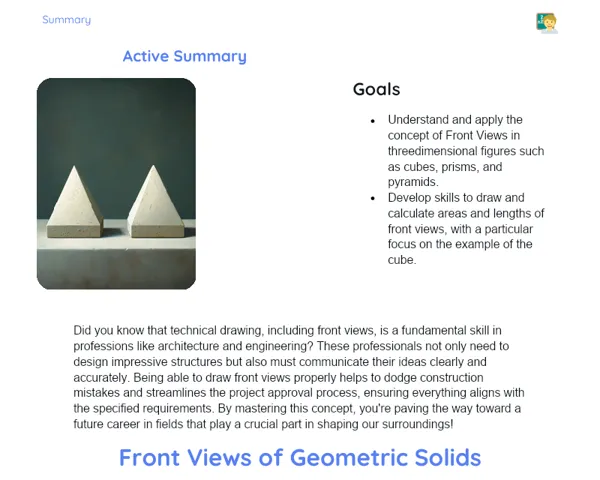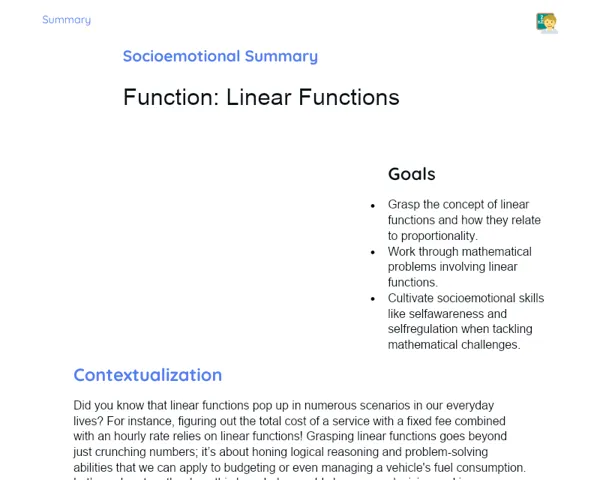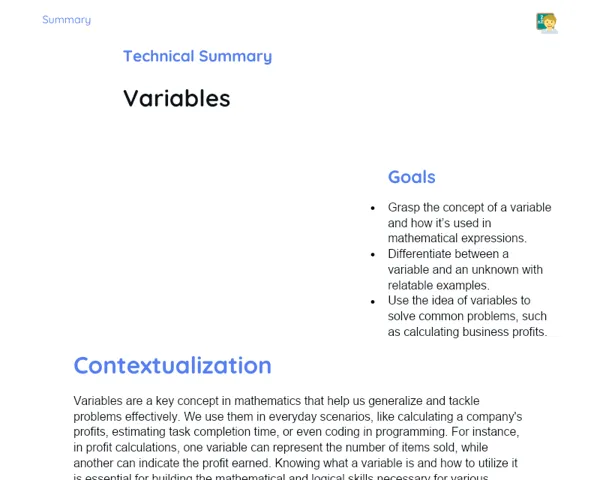Objectives
1. 📊 Become adept at identifying and calculating angles formed by parallel and transversal lines.
2. 🔍 Grasp and apply the concepts of alternate interior, exterior, and corresponding angles.
3. 🏙️ Appreciate the practical relevance of these concepts in everyday situations, such as urban design and engineering.
Contextualization
Did you know that being able to understand and work with parallel and transversal lines is not just crucial in maths, but it also holds significance in various other fields? Urban planners rely on these concepts to draft roads and buildings, while traffic engineers use them to optimise vehicle movement at intersections. By mastering these ideas, you're not only honing your geometry skills, but also equipping yourself with practical tools to influence the world around you!
Important Topics
Parallel Lines
Parallel lines are lines that, even when extended infinitely, never cross one another. This principle is a cornerstone of geometry with real-world applications in different areas like road construction and architecture. Knowing how to recognise and utilise parallel lines is vital for comprehending the geometric layout of cities and complex structures.
-
Two lines are parallel if they are in the same plane and do not intersect, keeping the same direction throughout their length.
-
Parallel lines possess significant properties, such as equal corresponding angles and equal alternate interior angles.
-
These properties are applied in a variety of practical contexts like circuit design and civil engineering.
Transversal Angles
Transversal angles come into play when a line cuts across two or more lines in a plane. Understanding these angles is key to grasping the relationship between parallel and perpendicular lines, and is pivotal in determining alternate interior, exterior, and corresponding angles.
-
When a line intersects a pair of parallel lines, the alternate interior angles formed are congruent (they have the same measurement).
-
Corresponding angles are also congruent when a transversal crosses parallel lines.
-
These relationships are utilized to tackle geometric problems and are foundational in fields like navigation and cartography.
Angle Calculation
Calculating the angles formed by parallel and transversal lines involves using geometric properties to find unknown measures. This skill is essential in practical scenarios like urban infrastructure placement and architectural design.
-
The calculation of alternate interior and exterior angles is carried out using properties of corresponding and alternate angles.
-
This ability is applied in disciplines like astronomy, where the observation of celestial bodies may necessitate angle calculations within complex reference systems.
-
Consistent practice of angle calculation helps sharpen logical reasoning and problem-solving capabilities.
Key Terms
-
Parallel Lines: Two or more lines that never meet, maintaining the same direction throughout their length.
-
Alternate Interior Angles: Angles found inside two lines sliced by a transversal, which are not next to one another but are on the same side of the transversal.
-
Corresponding Angles: Angles that are situated in the same relative position on each of the lines cut by the transversal, regardless of whether they are parallel.
For Reflection
-
How can understanding angles formed by parallel and transversal lines contribute to creating more functional and safer spaces in urban initiatives?
-
In which ways can knowledge of angles and parallel lines be useful in your everyday life beyond the classroom?
-
Why is it important to master these mathematical concepts for careers involving design and engineering?
Important Conclusions
-
Today, we delved into the intriguing realm of parallel and transversal lines, recognising how these concepts are essential not only in mathematics but also in various practical domains, from engineering to urban planning.
-
We explored alternate interior, exterior, and corresponding angles, and how their properties aid in solving intricate problems and enhancing our spatial awareness.
-
These ideas are more than just theories; they are powerful tools applicable to everyday life, whether you're drawing a basic house plan or planning significant urban infrastructure.
To Exercise Knowledge
- Sketch a small neighbourhood on graph paper, incorporating parallel streets and a transversal. Calculate and label the alternate interior and exterior angles. 2. Utilise a design app or software to create a simple park layout with parallel paths and a transversal bridge. Calculate the angles necessary for safe and attractive bridge construction. 3. In your neighbourhood, identify locations where streets run parallel and mentally draw the transversals. Attempt to estimate the angles formed and check your estimates using a compass app or inclinometer.
Challenge
🌟 Junior Urban Planner Challenge: Construct a small city model in a sandbox using popsicle sticks to represent streets. Modify the angles of the sticks to show different angles and types of intersections. Document your method and discuss how your understanding of angles and parallel lines assisted in creating a functional and visually appealing city.
Study Tips
-
Practice drawing and manipulating basic geometric figures like lines, triangles, and quadrilaterals to visualise angle properties effectively.
-
Watch educational videos showcasing practical uses of geometry in fields like architecture and engineering for real-world relevance.
-
Engage in online puzzle games involving angles and lines to boost your spatial reasoning and problem-solving skills.



